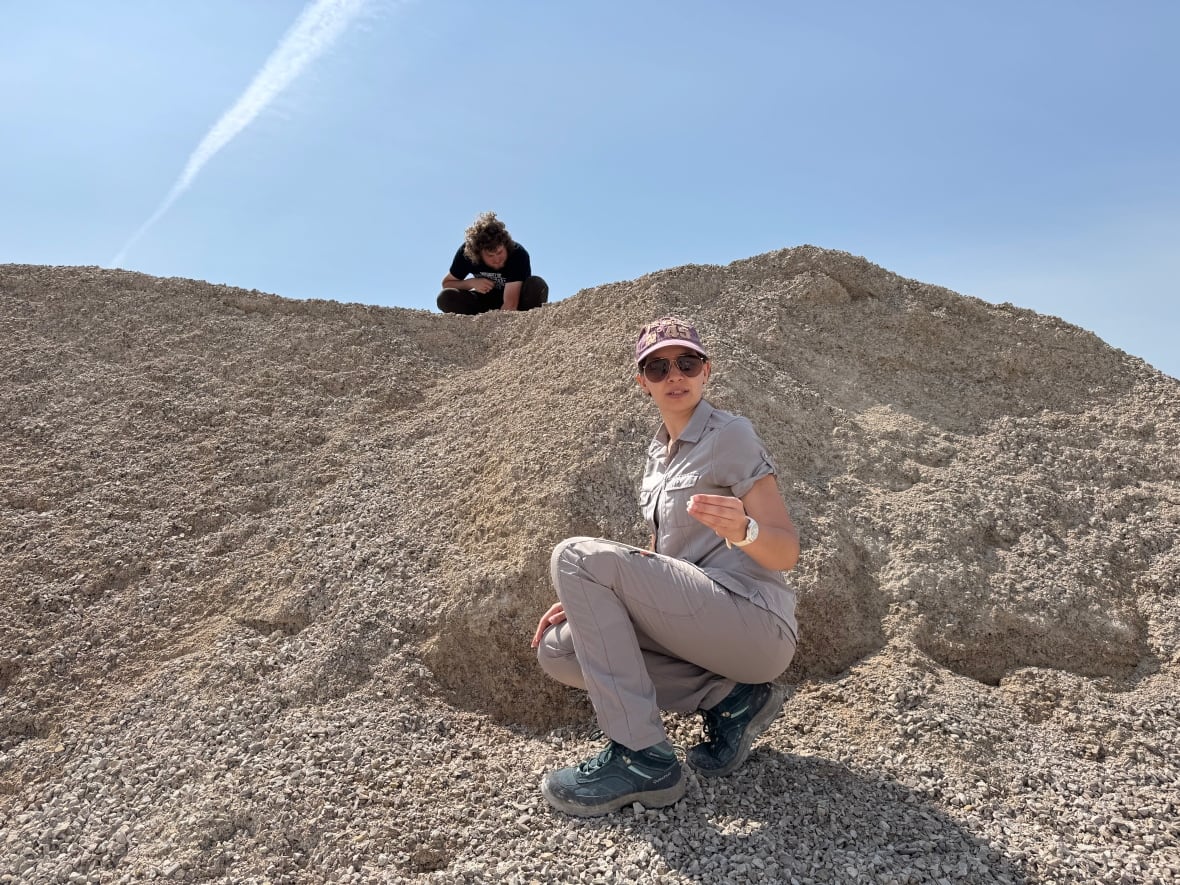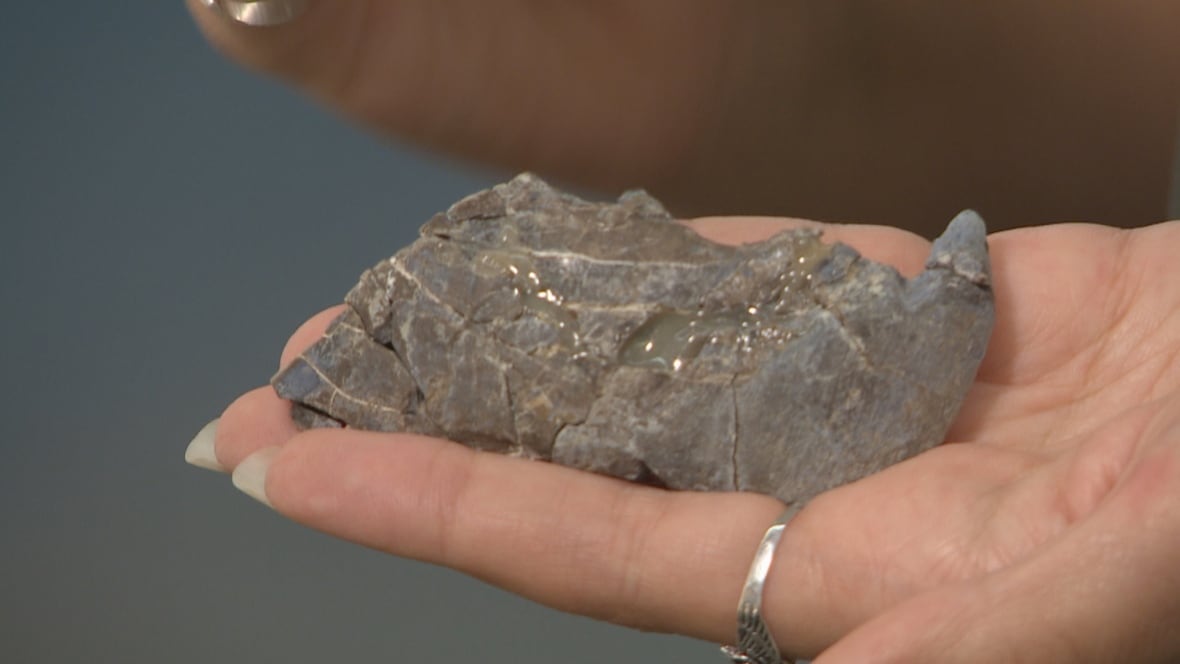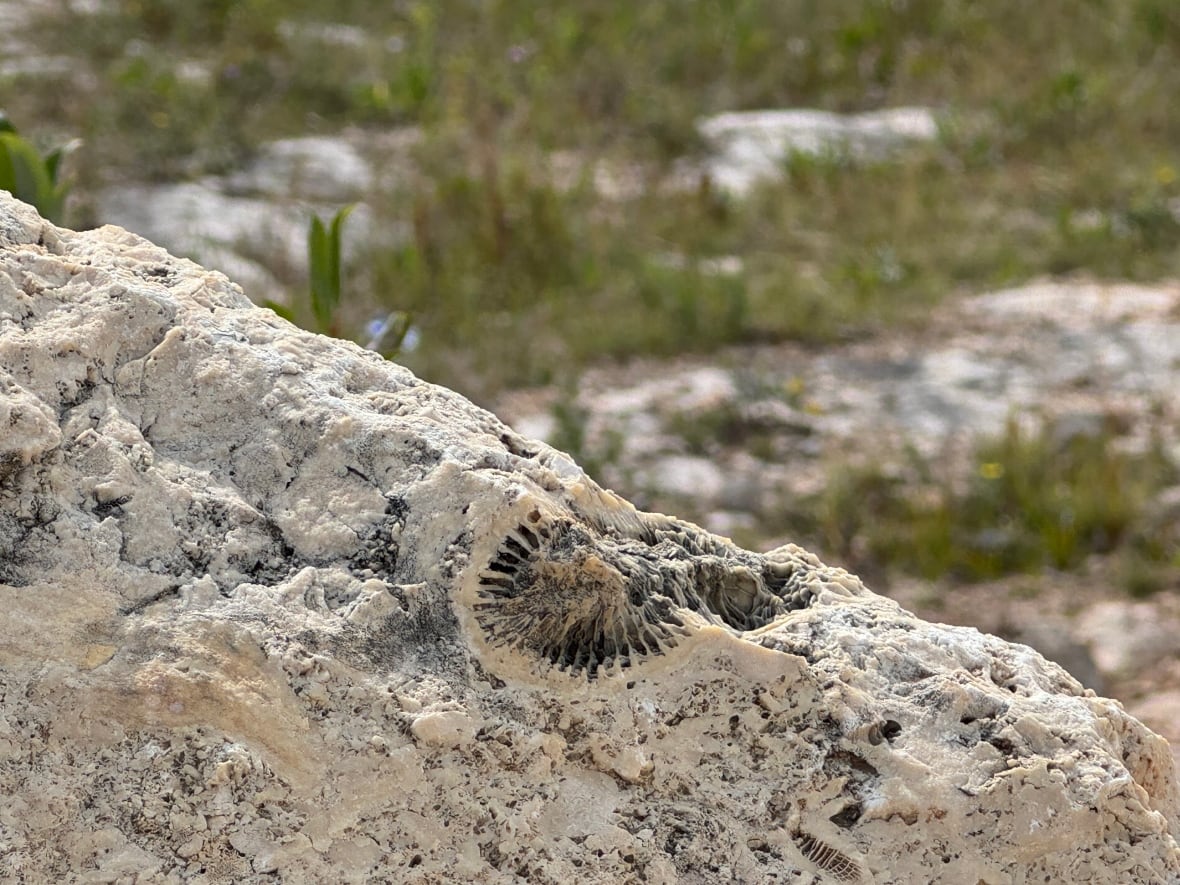Move over, Jurassic Park. Manitoba was home to newly discovered 390-million-year-old extinct fish

On a warm, sunny July day, paleontologist Melina Jobbins and her team search an old rock quarry near Lundar, Man., for 390-million-year-old fossils of an extinct fish that swam in what was once a vast inland sea.
Jobbins, a postdoctoral fellow at the PaleoSed+ lab at the University of Manitoba's department of earth sciences, spreads a geological map over the hood of her rental car to confirm which era of history they can expect to find fossils from in this area, now part of the Canadian Prairies.
"All the orange is Devonian," she tells Kirstin Brink, another paleontologist at the University of Manitoba. The Devonian period is nicknamed the Age of Fishes, Jobbins explains to a CBC reporter.
This area is where, in the 1990s, researchers from the University of Manitoba discovered some ancient fossils.
They weren't quite sure what they had found, but Jobbins studied them, found a few more fossils and realized it was a brand new discovery — one of the first fish to develop body armour, a jaw and teeth.

Jobbins renamed and reclassified the fish as Elmosteus lundarensis, named after the Elm Point Formation, the rock formation it was found in. Her research was published in July's edition of the Journal of Systematic Palaeontology.
The remnants of this fish are about 150 million years older than the dinosaurs and only about 1½ metres long, the size of a large Chinook salmon.

"We're hoping that we can look for more of these fish and more of the placoderms, more of Elmo and its relatives, as well," she said.
Jobbins pointed out the teeth, an eye socket and other features of the fossils in the collection of the university's Geological Sciences Museum.
The fish have armour made of dermal bone on the head and thorax, but the rest of the skeleton is made of cartilage, similar to sharks.
"This makes them a very important group to understand the origin of bone and the early evolution of bone, as well," Jobbins said.
"Also the jaws itself, because this is one of the first fish to develop jaws in the first place, and as well as teeth. They kind of come hand in hand. So understanding how this evolved, how it originated, how we got to having something like what we have today, which is on a whole other level of complexity."

Jobbins and her team are visiting more quarries this summer, hoping to find more fossils and answer more questions — what the animal looked like, but also its environment and what the conditions were for the evolution of these features.
"We can understand much more of what was present at the time and how diverse … which is incredible."
Manitoba is well-known for its fossil record, much of it on display at the Canadian Fossil Discovery Centre in Morden, Man. The province's Tyndall stone has preserved fossils of the world's largest mosasaurs, marine reptiles from the Cretaceous period.
As fellow paleontologist Brink scrambled over rocks, pointing out fossils of corals and sponges and relatives of the starfish, she explained that Manitoba is a great place for finding fossils because so many different ages of rock are preserved.
"We can see how life has changed through all these different time periods."
Many of the rocks have been dug up because mining "just kind of exposed all these fossils by accident, which is really great for us paleontologists," Brink said.
On this day, they found a lot of fossils, including some they'll use to teach students in fall, but unfortunately, Elmosteus lundarensis was elusive. They'll try again another time.

Still, Virgil Johnson, the reeve of the rural municipality of Coldwell who helped them access the quarries, was delighted.
Johnson grew up around here and spent a lot of time in the quarries.
"We used to find all these little fossils when we were crawling around out here and going swimming and stuff, so it was actually pretty neat that when you get the experts out here and kind of show you exactly how old things were and what they are," he said.
"It's very exciting."
cbc.ca




